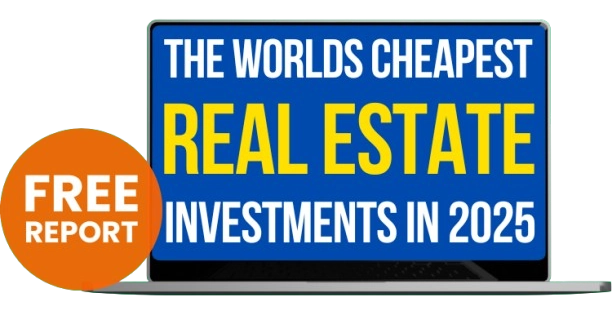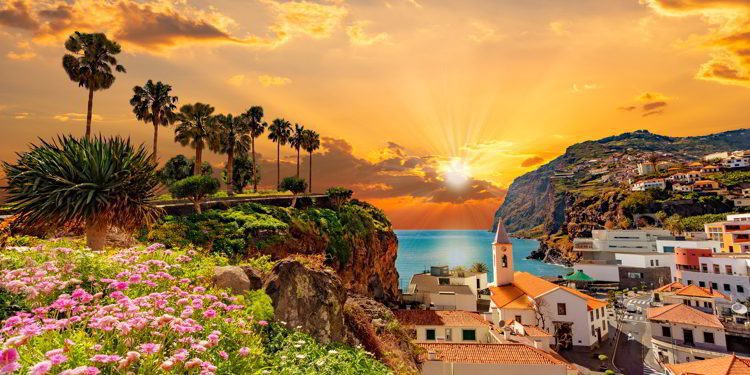Would you like to know my definition of “wealthy”?
For me, wealthy is when the cash flow from your investments covers all of your daily expenses.
I’m talking about when you don’t have to tap into your nest egg to pay any of your bills…
Or even to travel where and when you want… and to do whatever you want to do once you get there.
It means being able, finally, to sit back, relax, and enjoy the finer things in life.
For me, that’s true wealth. And real freedom.
And it’s not something reserved only for multimillionaires.
I can show you how to achieve this goal—how to earn steady, salary-level money every year without having to work for it.
If you’ve been reading these dispatches for any time, you know where I’m headed with this.
The secret to organizing your life and your investments so that you can live a wealthy lifestyle is global real estate.
Diversifying into property markets overseas means not only the end of worrying about paying your bills… it also means no more worrying about the ups and potentially spectacular downs of the stock market.
And, if you manage this right, you can have it all set up 100% on autopilot.
I’m focused full time on identifying new opportunities to profit from property in overseas markets… from farm investments and pre-construction deals to offers that take advantage of growing middle classes, the strength of the U.S. dollar, big-deal infrastructure advancements, and the fallout from the COVID-19 crisis in key tourism markets.
Here’s what I am studying right now:
1) Markets In Crisis
It can be hard to believe, but COVID-19 is not the world’s only crisis.
The pandemic has overshadowed them, but they’re going to come raging back once lockdowns lift and government support rolls back. Certain pockets within these crisis areas—specifically those in key European and Latin American markets—will be ripe for profits.
This is true even in surging markets. Take Portugal, for example. The country’s investment-for-residency scheme required property to be held for only a certain amount of time. My man on the inside has access to intel that points to when market oversaturation will occur… due to mass selling from Chinese and Middle Eastern buyers. Compounding this is a critical change in an investment-for-residency law…
And Portugal is only one example. In fact, some markets have the opposite problem—not enough housing—leading to outsized rental returns…
2) The Expanding Global Middle Class
This is a bona fide generational opportunity.
What separates North America and Europe from much of the rest of the world are their big middle classes.
As technology, investment, and education develop and expand globally, other countries’ middle classes are growing in significant ways.
An expanding middle class means more young professionals and families looking to buy or rent property, rather than living in multigenerational situations or in government housing. Even better, investing in property for this “new middle class” is usually cheap with some sort of financing available.
That said, not all expanding middle classes are created equal. Other factors come into play when sizing up a market in this phase of development.
3) Improving Infrastructure
A key tenet of my real estate strategy is to follow the “Path of Progress.”
Simply put, the more a market’s infrastructure improves, the more valuable the market.
You can get ahead of the price curve by identifying markets with planned and emerging infrastructure improvements. Of course, it’s not that simple—context is critical.
Several years ago, for example, I identified a beach town in the Caribbean that was positioned to explode in popularity. You see, a new highway from the capital had just been built, shaving hours off the trip from the airport. This made the town and the surrounding beach areas a much more accessible destination, even for weekend tourists…
As a result, property values shot up 25% a year for four straight years. All the while, investors were reaping annual rental returns of at least 10% net.
Highways, airports, tax-free zones, corporate centers, even supermarkets and big-box stores—we’re tracking both government and private development to identify where we’ll have an advantage.
4) Agriculture
It’s not news…
The world’s population is exploding… and the available farmland worldwide is shrinking. This is an easy supply-vs-demand situation that adds up to a no-brainer for investors.
Indeed, the world’s wealthiest investors, including Bill Gates, Ted Turner, Mark Zuckerberg, and Michael Burry, have turned to this sector.
If you’ve been reading me for a while, you know that I’m hyper-focused on farm investment opportunities. This is a sector dominated by corporations and the elite, but I’ve been able to find and negotiate deals that bring the profits to us middle-class investors.
I’ve identified five different productive land opportunities—covering Latin America, Europe, and Asia across multiple currencies and crops. Each promises net returns of 15% and beyond, and most come with a buy-in of less than US$50,000. You can learn more by joining my ongoing property investing conversation taking place in my free weekly service Overseas Property Alert.
Lief Simon










